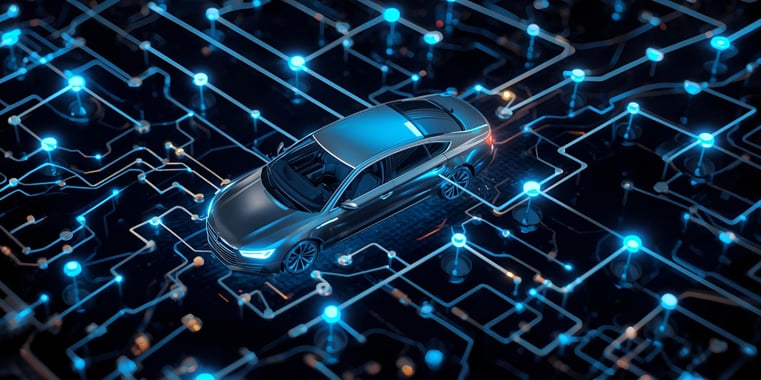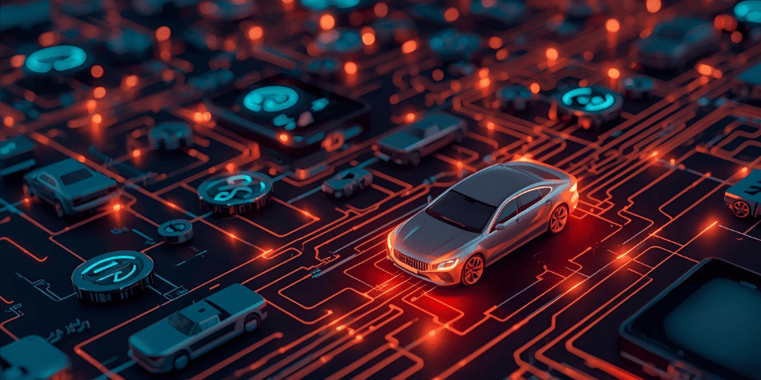The UK and global automotive industry are preparing for a significant regulatory transformation with the introduction of the U.S. Connected Vehicle Rule. This new regulatory framework, developed by the United States Department of Commerce, aims to address a growing sentiment that the inclusion of foreign-sourced technology in connected and autonomous vehicles represents a national security concern. It marks one of the most substantial government interventions in automotive technology supply chains ever.
TL;DR
As demand accelerates for increasingly connected and self-driving vehicles, the Connected Vehicle Rule introduces strict controls on where critical vehicle software and hardware can be sourced, with an explicit focus on excluding technologies originating from China and Russia.
Why The Connected Vehicle Rule Matters for the Automotive Industry
The Connected Vehicle Rule is about more than regulation — it signals a fundamental realignment of how governments view the intersection of national security and the provenance of commercial technology. The policy reflects the view that specific foreign-sourced digital infrastructure may pose unacceptable risks, even in consumer vehicles.
As vehicles increasingly become digital platforms — with software-defined features, real-time connectivity, and autonomous capabilities — companies that take proactive steps to comply will not only mitigate regulatory risk but also gain a competitive advantage in a marketplace increasingly defined by trust and transparency.
What the Connected Vehicle Rule Prohibits
The Connected Vehicle Rule restricts hardware and software that enable vehicle connectivity or automated driving when those components are sourced from specific foreign entities. Here’s how it works:
1. Ban on Importing Certain Vehicle Connectivity HardwareThe Rule prohibits importation (to the United States) of Vehicle Connectivity Systems (VCS) if they are:
- Designed, developed, manufactured, or supplied (either directly or indirectly) by Chinese or Russian entities - this includes:
- Companies headquartered, incorporated, or with principal place of business in China or Russia
- Subsidiaries or entities owned or controlled either by the Chinese or Russian governments or by Chinese or Russian entities/citizens
- Companies financed or subsidized in majority part by Chinese or Russian governments
- Any individual residing in China or Russia or who is employed by a company listed above
- Capable of enabling wireless communication above 450 MHz with external systems or networks
This includes components such as cellular modems, Wi-Fi and Bluetooth modules, and telematics units (among other devices) that transmit or receive data.
2. Restrictions on Software in Connected and Autonomous Vehicles
The Rule also bans the import or sale of completed vehicles that include software sourced from Chinese or Russian entities that powers either:
- A VCS, or
- An Automated Driving System (ADS) — defined as software that can perform the entire dynamic driving task without human involvement
Connected Vehicle Rule Implementation Timeline
The new regulation will be rolled out in phases, and there are two key dates that vehicle manufacturers should be aware of:
- Model Year 2027 – The restrictions on covered software come into force (with an allowance for legacy software created prior to March 18, 2026).
- Model Year 2030 – The restrictions on hardware come into force.
Given the long lead times for vehicle development and supply chain transformation, companies must begin preparations well before these deadlines.
The Finite State Strategic Advantage: Regulatory Insight and Practical Guidance
Finite State is working closely with a wide range of clients — including automotive manufacturers (OEMs), Tier-1 suppliers, and their legal advisers — to interpret, plan for, and comply with the Connected Vehicle Rule. Our support is distinguished by a combination of legal, technical, and policy-level expertise.
Deep Knowledge of the Regulation
We’ve worked extensively with legal experts. This has given us exceptional insight into:
- The legal, policy, and technical implications of every word in the Rule
- How enforcement may be applied in edge cases
- Practical risk assessment and mitigation strategies
Direct Access to Policymakers
Our understanding of the Rule goes beyond the legal text. We have engaged both directly and indirectly with individual technical experts and policy makers involved in the interpretation and implementation of the Rule.
These interactions provide valuable intelligence on how the Rule will be enforced and how regulators will evaluate compliance in the years ahead.
How We’re Supporting Clients
The Finite State team is actively guiding organisations across the mobility ecosystem through the following services:
1. Supply Chain Audit and RealignmentWe assist companies in:
- Mapping current hardware and software suppliers across the vehicle lifecycle
- Identifying dependencies on restricted sources
- Reconfiguring supplier networks to align with regulatory requirements
Where compliance through substitution is not immediately viable, organisations may apply for a Specific Authorisation — a temporary waiver granted by the U.S. government allowing the import or sale of otherwise prohibited technologies. While there are significant questions on how Commerce will grant such authorisations (and whether their approach will change over time), we help clients:
- Determine whether pursuing an authorisation is feasible
- Build the strongest possible application case
- Assemble the required technical and legal documentation
We help businesses establish and formalise:
- Internal compliance procedures
- Required documentation to prove due diligence (which Commerce will require of OEMs and which OEMs will require of their suppliers)
If your business is involved in automotive electronics, embedded systems, or vehicle software — particularly if you operate globally — now is the time to act.
Finite State is ready to help you prepare for compliance, restructure supply chains, and future-proof your technology strategies. Book a call with our services team, or drop me an email at mike.hatherall@finitestate.io, to find out more.
Information gathered and formatted/adapted by Mike Hatherall, Lead Solutions Architect, Finite State.
Subscribe to Our Blog
Get the latest posts delivered straight to your inbox weekly.
Share this
You May Also Like
These Related Stories

Legacy Software & CVR Compliance Carveouts Explained

Unpacking Compliance: What Due Diligence Looks Like Under the Connected Vehicle Rule


